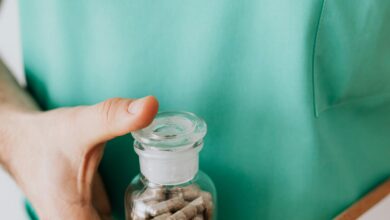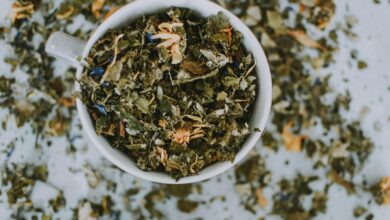The Best Treatments for Migraines and Headaches

Migraines and headaches are among the most common neurological conditions, affecting millions of people worldwide. While they may seem similar, migraines and tension-type headaches differ in their causes, symptoms, and treatment approaches. Understanding the differences and knowing the best treatments available can significantly improve your quality of life. In this article, we’ll explore the most effective treatments for both migraines and headaches, including lifestyle changes, medications, and alternative therapies.
1. Understanding Migraines vs. Headaches
Before diving into treatments, it’s essential to distinguish between migraines and other types of headaches:
Migraines
- Symptoms: Severe, throbbing pain (usually on one side of the head), nausea, vomiting, sensitivity to light (photophobia), sound (phonophobia), and sometimes aura (visual disturbances).
- Triggers: Hormonal changes, stress, certain foods, lack of sleep, dehydration, or environmental factors.
- Duration: Can last from 4 hours to several days.
Tension-Type Headaches
- Symptoms: Mild to moderate, dull pressure or tightness around the forehead or back of the head and neck.
- Triggers: Stress, poor posture, eye strain, or muscle tension.
- Duration: Typically lasts 30 minutes to a few hours but can persist longer.
Cluster Headaches
- Symptoms: Intense, piercing pain around one eye or temple, often accompanied by redness, tearing, or nasal congestion.
- Triggers: Unknown, but linked to circadian rhythms and alcohol consumption during episodes.
- Duration: Occur in “clusters” over weeks or months, with attacks lasting 15 minutes to 3 hours.
Each type requires tailored treatment strategies.
2. Lifestyle Modifications
Lifestyle changes are foundational for managing migraines and headaches. These adjustments can reduce frequency, severity, and duration of episodes.
1. Identify and Avoid Triggers
- Keep a headache diary to track potential triggers like food, stress, weather changes, or hormonal fluctuations.
- Common migraine triggers include caffeine, aged cheeses, processed meats, alcohol (especially red wine), and artificial sweeteners like aspartame.
2. Maintain a Consistent Routine
- Stick to regular sleep schedules, meal times, and hydration levels. Irregularities can provoke migraines or headaches.
- Aim for 7–9 hours of quality sleep per night.
3. Stay Hydrated
- Dehydration is a leading cause of headaches. Drink plenty of water throughout the day, especially if you’re physically active or live in hot climates.
4. Manage Stress
- Practice relaxation techniques such as deep breathing, meditation, yoga, or progressive muscle relaxation.
- Cognitive-behavioral therapy (CBT) can help reframe negative thought patterns that contribute to stress-related headaches.
5. Exercise Regularly
- Moderate aerobic exercise improves circulation, reduces stress, and releases endorphins, which act as natural painkillers.
- Activities like walking, swimming, or cycling are excellent choices.
3. Over-the-Counter (OTC) Medications
For mild to moderate headaches or early-stage migraines, OTC medications can provide relief.
Common Options:
- Acetaminophen (Tylenol): Effective for tension-type headaches but less so for migraines.
- Nonsteroidal Anti-Inflammatory Drugs (NSAIDs): Ibuprofen (Advil, Motrin) and naproxen (Aleve) work well for both migraines and tension headaches.
- Combination Products: Excedrin Migraine combines acetaminophen, aspirin, and caffeine for enhanced migraine relief.
Precautions:
- Avoid overuse, as frequent reliance on OTC medications can lead to rebound headaches (medication-overuse headaches).
- Consult a doctor before using NSAIDs if you have kidney issues, ulcers, or cardiovascular problems.
4. Prescription Medications
When OTC options aren’t sufficient, prescription medications may be necessary.
1. Abortive Treatments (Stop Attacks Once They Start)
These drugs target acute migraine attacks:
- Triptans: Sumatriptan (Imitrex), rizatriptan (Maxalt), and eletriptan (Relpax) constrict blood vessels and block pain pathways in the brain.
- Ergotamines: Ergotamine tartrate and dihydroergotamine (DHE) are older treatments still used for severe migraines.
- CGRP Inhibitors: Ubrogepant (Ubrelvy) and lasmiditan (Reyvow) are newer oral medications specifically designed for migraines.
2. Preventive Treatments (Reduce Frequency and Severity)
These medications aim to minimize the number of migraine days per month:
- Beta-Blockers: Propranolol and metoprolol regulate blood pressure and reduce migraine frequency.
- Antidepressants: Amitriptyline (Elavil) and venlafaxine (Effexor) address mood disorders and prevent migraines.
- Anti-Seizure Medications: Topiramate (Topamax) and valproate (Depakote) stabilize nerve activity.
- Monoclonal Antibodies: Erenumab (Aimovig), fremanezumab (Ajovy), and galcanezumab (Emgality) target CGRP proteins involved in migraines.
3. Cluster Headache Treatments
- Oxygen Therapy: Inhaling pure oxygen through a mask provides rapid relief during cluster attacks.
- Triptans: Subcutaneous sumatriptan injections or nasal sprays are highly effective.
- Preventives: Verapamil (a calcium channel blocker) is commonly prescribed to reduce attack frequency.
4. Natural and Alternative Therapies
Many individuals prefer non-pharmacological approaches to complement traditional treatments.
1. Herbal Supplements
- Butterbur: Shown to reduce migraine frequency; ensure products are free of pyrrolizidine alkaloids (PAs), which can harm the liver.
- Feverfew: May decrease inflammation and prevent migraines.
- Magnesium: Low magnesium levels are linked to migraines; supplementation can help, particularly for menstrual migraines.
2. Acupuncture
- This ancient Chinese practice involves inserting thin needles into specific points on the body. Studies suggest acupuncture reduces migraine frequency and intensity while improving overall well-being.
3. Biofeedback
- Biofeedback uses electronic devices to teach patients how to control physiological functions like muscle tension and heart rate. It’s particularly useful for tension headaches.
4. Chiropractic Care
- Spinal manipulation and alignment adjustments can alleviate tension headaches caused by poor posture or musculoskeletal imbalances.
5. Essential Oils
- Lavender oil promotes relaxation and reduces stress-related headaches. Peppermint oil applied topically can ease tension headaches.
5. Advanced Medical Procedures
For chronic migraines or refractory cases, advanced interventions may be considered.
1. Botox Injections
- OnabotulinumtoxinA (Botox) is FDA-approved for chronic migraines. Small injections administered every 12 weeks relax muscles and reduce headache frequency.
2. Neuromodulation Devices
- Cefaly: A wearable device that stimulates nerves associated with migraines.
- GammaCore: Targets vagus nerve stimulation to relieve cluster headaches and migraines.
3. Surgery
- In rare cases, surgical decompression of nerves implicated in migraines (e.g., occipital or supraorbital nerves) may be explored.
6. When to See a Doctor
While occasional headaches are normal, seek medical attention if you experience:
- Sudden, severe headaches unlike anything you’ve had before.
- Headaches accompanied by fever, stiff neck, confusion, seizures, or vision changes.
- Progressive worsening of headaches despite treatment.
- New onset of headaches after age 50.
A neurologist specializing in headaches can perform diagnostic tests (e.g., MRI, CT scan) to rule out underlying conditions like tumors, infections, or vascular abnormalities.




